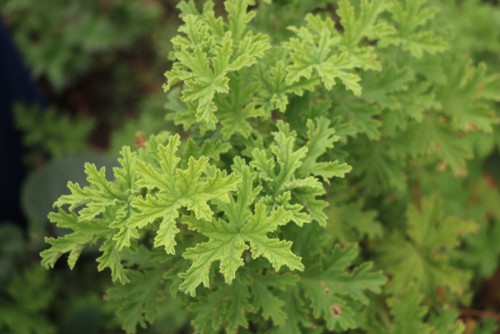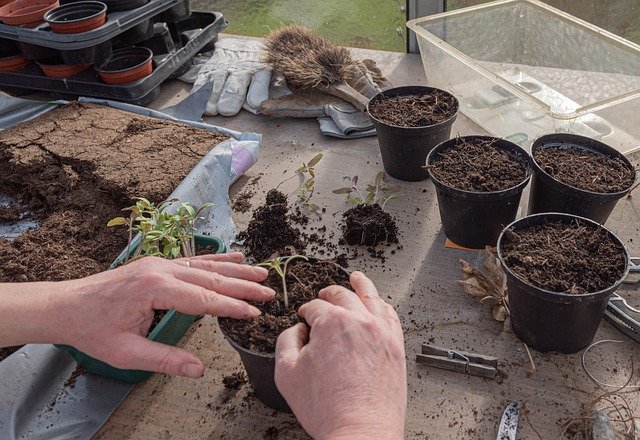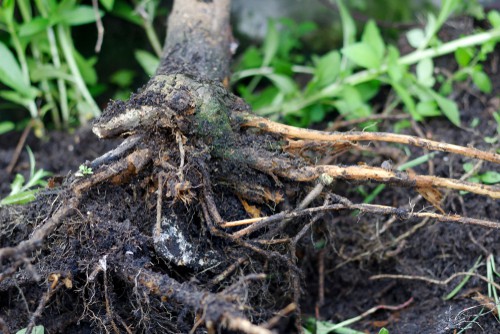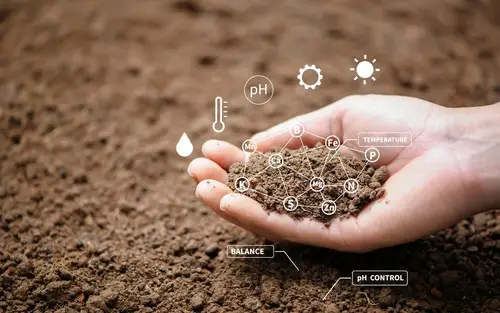Citronella plants are a popular choice for those looking to add a touch of greenery to their gardens or homes. These plants are known for their distinct lemony fragrance, which is said to repel mosquitoes and other insects. However, one common issue that citronella plant owners face is yellowing leaves.
Citronella leaves turning yellow can be a sign of various issues, including overwatering, nutrient deficiencies, pests, or disease. It’s essential to understand the underlying causes of yellowing leaves to address the problem and ensure that your citronella plant stays healthy and green.
By paying attention to factors such as sunlight, watering and humidity, soil and potting conditions, nutrient requirements, temperature, and pest infestations, you can take preventive measures to keep your citronella plant in good condition.
Key Takeaways
- Yellowing leaves on citronella plants can be a sign of overwatering, nutrient deficiencies, pests, or disease.
- Factors such as sunlight, watering and humidity, soil and potting conditions, nutrient requirements, temperature, and pest infestations can affect the health of your citronella plant.
- By taking preventive measures and addressing underlying issues, you can keep your citronella plant healthy and green.
Also don’t miss out on these other related posts:
Understanding Yellowing Citronella Leaves

Citronella plants are known for their strong lemony scent and their ability to repel mosquitoes. However, yellowing leaves on a citronella plant can be a cause for concern. In this section, we will explore the common causes of yellowing citronella leaves and how to address them.
Citronella Leaves Turning Yellow – 4 Common Problems
1. Overwatering
Overwatering is a common cause of yellowing leaves on a citronella plant. When the plant is watered too frequently or the soil is not well-draining, the roots become waterlogged, which can lead to root rot. As a result, the plant is unable to absorb nutrients properly, causing the leaves to turn yellow.
2. Nutrient Deficiency
Citronella plants require a balanced diet of nutrients to thrive. A lack of essential nutrients such as nitrogen, iron, or magnesium can cause the leaves to turn yellow. Nitrogen is particularly important for the growth of the plant and a deficiency can cause older leaves to turn yellow.
3. Pests and Diseases
Yellowing leaves on a citronella plant can also be a sign of pest infestations or diseases. Common pests that attack citronella plants include spider mites and aphids, which suck the sap out of the leaves, causing them to turn yellow and drop off. Fungal diseases such as powdery mildew can also cause yellowing leaves.
4. Stress
Citronella plants can also experience stress due to environmental factors such as extreme temperatures or insufficient sunlight. Stress can cause the plant to become weak and vulnerable to pests and diseases, leading to yellowing leaves.
Addressing Yellowing Citronella Leaves
To address yellowing citronella leaves, it is important to identify the underlying cause and take appropriate action. Here are some tips to help you get started:
- Check the soil moisture levels and adjust watering frequency accordingly.
- Ensure that the soil is well-draining and add organic matter such as compost to improve soil quality.
- Fertilize the plant with a balanced fertilizer to provide essential nutrients.
- Treat pest infestations with insecticidal soap or neem oil spray.
- Prune the plant to remove diseased or damaged leaves and improve air circulation.
- Provide adequate sunlight and protect the plant from extreme temperatures.
By understanding the causes of yellowing citronella leaves and taking appropriate action, you can help your plant stay healthy and vibrant.
Role of Sunlight

Sunlight is critical for the growth of citronella plants. It is an essential component of photosynthesis, the process by which plants convert sunlight into energy. However, too much or too little sunlight can cause citronella leaves to turn yellow.
Citronella plants prefer partial shade, which means they should receive around 4-6 hours of direct sunlight per day. If the plants receive too much direct sunlight, the leaves can become scorched and turn yellow.
On the other hand, if the plants do not receive enough sunlight, they can become weak and susceptible to pests and diseases, which can also cause the leaves to turn yellow.
It is important to note that lighting issues can also cause citronella leaves to turn yellow. For example, if the plants are placed too close to a window or other light source, the leaves can become burnt and turn yellow. Similarly, if the plants are placed in an area with poor lighting, they may not receive enough sunlight to grow properly.
To prevent citronella leaves from turning yellow due to lighting issues, it is important to place the plants in an area with the appropriate amount of sunlight and to monitor them regularly.
If the plants are receiving too much sunlight, they can be moved to an area with partial shade. If they are not receiving enough sunlight, they can be moved to an area with more direct sunlight.
Watering and Humidity Factors
Citronella plants require consistent watering to thrive, but it is important to avoid overwatering or underwatering them. Overwatering can cause the leaves to turn yellow and wilt, while underwatering can cause the leaves to dry out and become brittle.
To prevent overwatering, it is recommended to water the citronella plant only when the top inch of soil is dry to the touch. This can be determined by inserting a finger into the soil or by using a moisture meter. It is also important to ensure that the pot or soil has proper drainage to prevent water from accumulating in the roots.
On the other hand, underwatering can be prevented by establishing a regular watering schedule. Citronella plants prefer moist soil, so it is important to water them consistently. However, it is important to avoid watering them too frequently, as this can lead to root rot and other issues.
In addition to proper watering, humidity levels can also affect the health of the citronella plant. Low humidity can cause the leaves to dry out and turn yellow, while high humidity can lead to fungal growth and other issues.
To maintain proper humidity levels, it is recommended to mist the leaves of the citronella plant with water or place a humidifier nearby. It is also important to avoid placing the plant near air conditioning or heating vents, as this can cause fluctuations in humidity levels.
Soil and Potting Conditions

The soil and potting conditions are crucial factors that affect the growth and health of citronella plants. Using the right type of soil and potting mix can prevent yellowing of the leaves and ensure that the plant thrives.
Citronella plants require well-draining soil that allows excess water to drain out quickly. Compacted roots due to low-quality soil or over-packing of the pot can cause yellowing of the leaves. It is recommended to use a container that is slightly larger than the root ball to prevent root-bound conditions.
Using a well-draining, high-quality potting mix is essential for the healthy growth of citronella plants. A well-draining soil mix ensures that the roots do not remain in waterlogged soil, which can cause root rot and yellowing of the leaves.
It is important to check for drainage issues in the container, as stagnant water can cause root rot and other diseases. To ensure proper drainage, it is recommended to use containers with drainage holes at the bottom.
Nutrient Requirements and Deficiencies
Citronella plants require a balanced fertilizer to thrive. A balanced fertilizer contains equal parts of nitrogen, phosphorus, and potassium, also known as NPK. Nitrogen is essential for leaf growth and plant development. Phosphorus is important for root growth and flower and fruit development. Potassium helps with overall plant health, including disease resistance and stress tolerance.
Nutrient deficiencies can cause citronella leaves to turn yellow. The most common nutrient deficiencies are magnesium and iron. However, it is possible that other nutrients may be deficient, such as nitrogen, phosphorus, potassium, copper, sulfur, zinc, molybdenum, or manganese.
To prevent nutrient deficiencies, it is important to fertilize citronella plants regularly. A balanced fertilizer can provide the necessary nutrients for healthy plant growth. It is recommended to fertilize citronella plants every two to three weeks during the growing season.
Over-fertilizing can also cause problems for citronella plants. Excessive amounts of nitrogen can lead to an overgrowth of foliage and a lack of flowers. Too much phosphorus can cause root burn and damage. And too much potassium can interfere with the absorption of other nutrients.
Temperature and Growth
Temperature plays a crucial role in the growth of citronella plants. These plants thrive in mild climates, with temperatures ranging between 70°F and 85°F. During the spring, when the growing season begins, it is important to ensure that the temperature is not too low or too high. Extreme temperatures can cause stunted growth and yellowing leaves.
Citronella plants are sensitive to cold temperatures and frost. If the temperature drops below 50°F, the plant may start to show signs of stress, including yellowing leaves. During the winter months, it is important to bring the plant indoors if you live in a cooler climate. This will protect it from the cold and ensure that it continues to grow healthy.
On the other hand, high temperatures can also be detrimental to the growth of citronella plants. If the temperature rises above 85°F, the plant may start to wilt and show signs of stress. In such cases, it is important to provide the plant with shade and ensure that it is not exposed to direct sunlight for extended periods of time.
Citronella Plant Diseases
Citronella plants are susceptible to several diseases that can cause yellowing of the leaves. Some of the most common diseases that affect citronella plants include root rot, leaf spot, and powdery mildew.
1. Root Rot

Root rot is a fungal disease that can affect citronella plants when they are overwatered. The fungus attacks the roots of the plant, causing them to rot and die. This can lead to yellowing of the leaves, as the plant is unable to absorb nutrients from the soil. To prevent root rot, it is important to avoid overwatering and ensure that the soil is well-draining.
2. Leaf Spot
Leaf spot is another fungal disease that can affect citronella plants. It is characterized by the appearance of small, dark spots on the leaves. As the disease progresses, the spots may turn yellow and the leaves may drop off. Leaf spot can be prevented by avoiding overhead watering and ensuring that the plant is well-ventilated.
3. Powdery Mildew
Powdery mildew is a fungal disease that affects many different types of plants, including citronella. It is characterized by a white, powdery coating on the leaves and stems of the plant. As the disease progresses, the leaves may turn yellow and drop off. Powdery mildew can be prevented by ensuring that the plant is well-ventilated and avoiding overhead watering.
4. Other Diseases
In addition to root rot, leaf spot, and powdery mildew, there are several other diseases that can affect citronella plants. These include bacterial leaf spot, which is characterized by brown spots on the leaves, and rust, which causes orange or brown spots on the leaves.
To prevent these diseases, it is important to ensure that the plant is well-maintained and free from pests and other stressors.
Pest Infestations
Yellow leaves on a citronella plant could be a sign of pest infestations. Common pests that attack citronella plants include spider mites and aphids. These pests suck the sap out of the leaves, causing them to turn yellow and drop off. If left untreated, the pests can weaken the plant and make it more susceptible to diseases.
To treat pest infestations, use an insecticidal soap or neem oil spray. Insecticidal soap is a natural and effective way to control aphids and spider mites. It works by suffocating the pests and disrupting their cell membranes.
Neem oil, on the other hand, is a natural insecticide that repels mosquitoes and other pests. It works by disrupting the hormonal balance of the pests and preventing them from feeding and reproducing.
When using insecticidal soap or neem oil, it is important to follow the instructions on the label carefully. Apply the spray to the affected leaves and stems, making sure to cover both sides of the leaves. Repeat the treatment every 7 to 10 days until the pests are gone.
It is also important to keep the plant healthy and well-maintained to prevent pest infestations. Water the plant deeply once or twice a week and make sure the soil is well-drained. Avoid overwatering, as this can lead to root rot and other diseases. Fertilize the plant monthly to provide it with the nutrients it needs to grow strong and healthy.
Citronella Plant Care
Citronella plants are easy to care for and require minimal maintenance. However, proper care is essential to keep them healthy and thriving. Here are some essential tips for citronella plant care.
1. Watering
Citronella plants need consistent moisture to thrive. However, overwatering can be harmful to the plant. The soil should be kept moist but not waterlogged. Water the plant when the top layer of soil feels dry to the touch. The frequency of watering will depend on the climate and humidity levels in your area.
2. Light
Citronella plants require plenty of sunlight to grow properly. They prefer bright, filtered light and can tolerate full sun. However, too much direct sunlight can scorch the leaves. Place the plant in a location where it can receive 6-8 hours of indirect sunlight per day.
3. Soil

Citronella plants prefer well-draining soil with a pH level between 5.5 and 6.5. The soil should be rich in organic matter and nutrients. Use a good quality potting mix and add compost or fertilizer to the soil every few months. Avoid using heavy soils or soils that retain too much moisture.
4. Trimming and Pruning
Citronella plants can grow up to 5-6 feet tall if left untrimmed. Regular trimming and pruning can help maintain the plant’s shape and size. Trim the plant regularly to remove any dead or yellowing leaves. Prune the plant in early spring to encourage new growth and maintain its shape.
5. Pests and Diseases
Citronella plants are relatively pest and disease-resistant. However, they can be affected by spider mites, whiteflies, and aphids. Regularly inspect the plant for any signs of pests or diseases. If you notice any issues, treat the plant with an appropriate insecticide or fungicide.
Unique Features of Citronella
Citronella is a perennial grass that belongs to the Cymbopogon family. It is native to tropical Asia and is widely cultivated for its essential oil, which is extracted from its leaves. Citronella oil is used in various products, such as candles, soaps, and insect repellents because of its strong lemon scent.
The citronella plant is known for its strong lemon scent, which makes it a popular choice for gardeners who want to add a lemony fragrance to their outdoor spaces.
The plant has long, slender leaves that are green in color and can grow up to 6 feet tall. The leaves are also known for their ability to repel insects, which is why citronella oil is commonly used in insect repellents.
In addition to its scent and insect-repelling properties, the citronella plant has other unique features. For instance, it is often confused with scented geraniums because they both have pink flowers and a similar scent.
However, the citronella plant is different from scented geraniums in that it has a more potent lemon scent and is used primarily for its essential oil.
Preventive Measures and Solutions
If a gardener notices their citronella plant’s leaves turning yellow, they can take preventive measures to avoid the problem from arising in the future.
One of the most crucial preventive measures is to ensure that the plant is receiving adequate sunlight. Citronella plants require full sun to thrive, so gardeners should ensure that they plant them in a spot that receives at least six hours of direct sunlight per day.
Another preventive measure is to ensure that the soil is well-draining and light. Citronella plants prefer soil that is not too compact and drains well. Gardeners can achieve this by adding perlite or sand to the soil.
Fertilizing citronella plants once a month can also help prevent yellowing leaves. Gardeners should use a balanced fertilizer that contains equal amounts of nitrogen, phosphorus, and potassium.
If the plant’s leaves are already turning yellow, gardeners can take certain measures to solve the problem. Overwatering is a common cause of yellowing leaves, so gardeners should ensure that they are not watering the plant too frequently. They should only water the plant when the top layer of soil is dry to the touch.
If overwatering is not the issue, gardeners can try using neem oil as a fungicide. Neem oil is a natural fungicide that can help prevent fungal infections that cause yellowing leaves. Gardeners should follow the instructions on the label when using neem oil.
Origin of Citronella
Citronella is a perennial grass that belongs to the Cymbopogon genus. It is native to tropical regions of Asia, particularly in countries such as India, Sri Lanka, Indonesia, and China. The plant has been used for centuries in traditional medicine and cuisine in these regions.
Citronella grass is a tall, aromatic plant that can grow up to 2 meters in height. It has long, slender leaves and produces flowers in clusters. The plant is known for its strong citrusy scent, which is why it is often used to make essential oils and fragrances.
The use of citronella as an insect repellent dates back to ancient times. In India, the plant was burned to keep mosquitoes away, while in Sri Lanka, it was used to repel fleas and other pests. The plant’s insect-repelling properties were later discovered by European settlers in the 19th century, leading to its widespread use as a natural insect repellent.
Today, citronella is grown commercially in many countries, including China, Indonesia, and Sri Lanka. The plant is also cultivated in other parts of the world, such as Africa and South America, for its essential oil, which is used in a variety of products, including candles, soaps, and lotions.
Frequently Asked Questions
Can citronella plants take full sun?
Citronella plants prefer full sun, which means they need at least six hours of direct sunlight each day. However, they can also tolerate partial shade, especially during the hottest parts of the day. If your citronella plant is not getting enough sun, it may become leggy or produce fewer leaves.
Why are my citronella plant leaves turning yellow?
Yellow leaves on a citronella plant can be caused by a variety of factors, including overwatering, pest infestations, nutrient deficiencies, and root-bound conditions. It’s important to identify the underlying cause of yellowing leaves to determine the appropriate treatment.
How do I revive a dying citronella plant?
To revive a dying citronella plant, you must first identify the cause of its decline. If the plant is overwatered, you should transfer it to fresh soil and adjust your watering schedule.
If it’s underwatered, you should increase your watering frequency and make sure the soil is moist but not waterlogged. Other treatments may include pruning, fertilizing, and repotting.
What causes yellowing leaves on citronella plants?
Yellowing leaves on citronella plants can be caused by a variety of factors, including overwatering, pest infestations, nutrient deficiencies, and root-bound conditions. It’s important to identify the underlying cause of yellowing leaves to determine the appropriate treatment.
How often should I water my citronella plant?
Citronella plants prefer well-draining soil that is moist but not waterlogged. You should water your plant when the top layer of soil feels dry to the touch. The frequency of watering will depend on the temperature, humidity, and sunlight conditions in your area.
Are yellow leaves on citronella plants a sign of overwatering or underwatering?
Yellow leaves on citronella plants can be a sign of both overwatering and underwatering. Overwatering can cause the roots to rot, while underwatering can cause the leaves to dry out and turn yellow. It’s important to identify the underlying cause of yellowing leaves to determine the appropriate treatment.

Hey, I’m Lisa and I’ve been an avid gardener for over 30 years. I love writing, talking and living in the garden! Feel free to connect with me on my socials below


